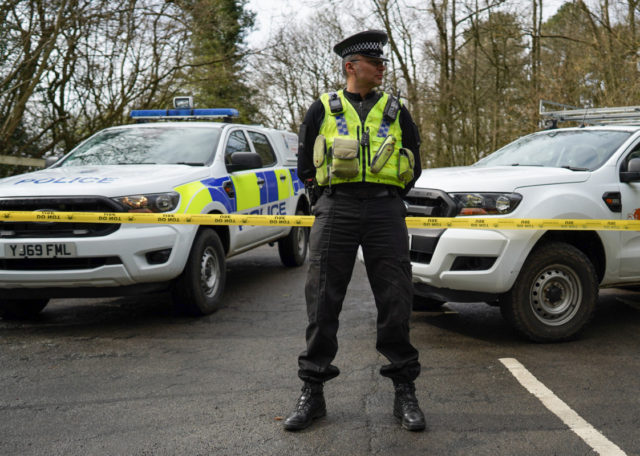Britain’s drastic lockdown policy may be based on a flawed and unreliable model devised by a scientist with a track record of failure.
Professor Neil Ferguson, director of the MRC Centre for Global Infectious Disease Analysis at Imperial College, London, is the scientist behind the doomsday report that terrified Prime Minister Boris Johnson into imposing sudden and radical lockdown measures across the United Kingdom.
The report apocalyptically predicted that coronavirus could kill as many as 500,000 people in Britain if nothing was done to stop the spread of the disease.
Ferguson has since substantially revised down his death toll, saying it could be “substantially less than 20,000”. Colleagues at Imperial, however, have at times predicted a death toll even smaller than that — as few as 5,700 fatalities if the lockdown continues.
Rival scientists are increasingly critical of Ferguson’s original doomsday predictions, noting that his previous modelled forecasts have been found severely wanting.
Among his critics is Professor Michael Thrusfield of Edinburgh University, co-author of two reports highly critical of Ferguson’s mathematical modelling during the 2001 Foot and Mouth crisis.
Ferguson’s predictive modelling — which helped persuade Tony Blair’s government to carry out a pre-emptive cull which led to the deaths of more than six million cattle, sheep and pigs and which cost the UK economy an estimated £10 billion — was subsequently described as “not fit for purpose.”
According to the Telegraph:
A 2011 paper, Destructive Tension: mathematics versus experience – the progress and control of the 2001 foot and mouth epidemic in Great Britain, found that the government ordered the destruction of millions of animals because of “severely flawed” modelling.
According to one of its authors – the former head of the Pirbright Laboratory at the Institute for Animal Health, Dr Alex Donaldson – Ferguson’s models made a “serious error” by “ignoring the species composition of farms,” and the fact that the disease spread faster between some species than others.
The report stated: “The mathematical models were, at best, crude estimations that could not differentiate risk between farms and, at worst, inaccurate representations of the epidemiology of FMD.”
An earlier critical report, co-authored by Thrusfield, identified Ferguson’s modelling as the main driver of government policy during the epidemic.
Professor Thrusfield told the Telegraph:
“This is déjà vu. During the [FMD] epidemic there was quite vocal opposition from members of the vet profession – especially those who had their hands soaked in blood, killing perfectly healthy cattle.
“There was also a major economic and emotional impact on those involved, [because] the slaughter of these animals that were perfectly healthy. This was serious stuff. This was farmers losing their livelihoods. They need not have been slaughtered but they were because the predictions were wrong.”
Ferguson’s modelling has also been criticised by John Ioannidis, a professor in disease prevention at Stanford University. He has said that while Imperial’s modellers are highly competent, “some of the major assumptions and estimates that are built in the calculations seem to be substantially inflated.”
Others go even further in their criticisms. Dr Nic Lewis finds in this report that the best available data “does not support the fatality rate assumptions underlying the Imperial study.”
The debate — as former professor-turned-author Hector Drummond says — has got very personal, not least because of a backstory rife with sexual intrigue.
Drummond describes the lines of opposition here:
So we have two epidemiological teams, one at Imperial, and one at Oxford, with differing ideas about Covid-19.
The Imperial team, led by Prof. Neil Ferguson, is the team whose study has led to the UK shutdown (Ferguson is a current member of SAGE, the UK government’s Scientific Advisory Group for Emergencies). They’re the current big guns in this world, and have been for years, ever since the 2001 foot and mouth epidemic when they were led by Professor Roy Anderson, and Ferguson was his protege.
Then there’s the Oxford team, led by Sunetra Gupta. They recently brought out a studytrashing the Imperial’s study, and claiming that half the country may already have had the virus.
The Gupta-led team from Oxford’s Evolutionary Ecology of Infectious Disease group claims that vastly more people have already been infected by the coronavirus in the UK, perhaps as much as half the population.
If correct, of course, this would undermine the entire basis of the government’s lock-down policy which is predicated on the doomsday theories of the discredited Ferguson. Today’s solutions so often become tomorrow’s problems — and from wrecking the economy to undermining civil liberties on the say-so of the technocrat Ferguson, we may be storing up some real whoppers to deal with tomorrow.

COMMENTS
Please let us know if you're having issues with commenting.